- Home
- Lloyd Jones
A History of Silence Page 12
A History of Silence Read online
Page 12
My daughter and I paddled a Malibu surf kayak out to the bay with Mum’s ashes on board. I picked a spot she would have been able to see from both houses. The ashes were surprisingly heavy. I poured a stream of white grain into the sea. We paddled in. A few hours later, after lunch at my sister Pat’s house, I drove back around the bay. The tide was out a long way, a spring tide, and never have I seen so many gulls in that bay, fighting and diving over the bounty stranded on the sand bars. It was shocking to see, and extraordinary to think that, just a few days earlier, still fully bodied and alert, Mum had lain in bed gazing across this same stretch of water. Without a thought, I am certain, that a few days later seagulls would be squabbling over her ashes.
A day later the gesture felt horribly miscalculated. The sentimentality that led me to paddle her ashes out to sea, the diligent marking of the spot on the tide. What was I thinking? What was wrong with putting her ashes in a jar or burying them in a garden?
From the cemetery office I got in the car and drove deeper into this community of the dead, turning right as instructed by the pedestal with the angel to enter the older part of the cemetery.
I parked, and for the next hour explored the paths between the promised lands and laments, reunited with Jesus, at rest, joined her husband on this day, entered sleep, drowned at sea, and so on.
I found a row beginning with Smith and two unmarked graves, one with a dead tree stump resting on it, but there wasn’t an Eliot or Wilton in sight, which was disappointing because I liked the wild abandonment of those unmarked plots.
I could sniff rain on its way. It was the edge of a front that was forecast to batter the country over the coming days. I hurried back to the car and drove on until I found a path on the northern side of the hill more closely aligned with the map that the woman in the office had given me.
I quickly found the row beginning with Smith but, as before, could find neither Eliot or Wilton. I checked with the map and was certain I was on the right path. I found one unmarked grave but still no Eliot or Wilton. I walked up and down the rows of headstones. Many of the graves were overgrown, sprouting ngaio and other shrubs. I had to push away the branches and press my fingers into the letters on headstones grown over with lichen. By now it was spitting, so I started back up the hill.
Near the road two leis hung in the branches of a tree sheltering a headstone. A woman knelt on a grave with a bucket of water and a scrubbing brush. There were photographs on the headstone of a Samoan woman and a Scotsman. The kneeling woman was scrubbing their grave as though it were a doorstep. I stopped to show her my map to see if she could make sense of it. She said she had just come from visiting her husband’s grave at Makara Cemetery, now it was the turn of her parents. A shorthaired dog lay on the next grave. She said she always brought her dog and made a point of introducing herself and the dog to the deceased.
As I drove away from the cemetery I found myself hatching plans for when I find, as surely I will, my grandmother’s grave. I will have a headstone erected and inscribed. It won’t make any difference to Eleanor Gwendoline Jones. But it will push back the edges of erasure to honour a history that has never been acknowledged.
It is a shock to realise how easily the past is disposed of. The man from Pembroke Dock rises from his hospital bed a different man, a single man without responsibilities. He leaves the hospital to find a new world with different possibilities. In a sense he has risen from the dead—a ‘drowned Welsh sea captain’—to stumble up the beach to a new and more interesting place where he can start over without the inconvenience of history. He can get on his way again. He can forget Eleanor and all those kids. How many of them. Six? The wind is getting up—look how it dislodges old paper stuck to the road, peeling it off, scattering it. Nothing sticks forever. Nothing—not love, or hygiene, or appetite, not day or night, or the tide. No, wherever he looks, he finds a provisional world. I am a father can turn into I was a father. He can pretend that Eleanor and the children were a kind of misadventure. As he leaves the hospital gates to walk along Adelaide Road, how new and vital the world smells. Like everyone else in this city he knows how changeable the weather is. In minutes a fine still day in Wellington can turn into a tempest. If it comes to that he will burrow down into the wind, hold his hat low to his face and pick his way around the edge of the city. At the railway station he will buy a ticket to Auckland, and in the new city his resurrection will take full possession of itself.
On his way north, a moment arrives at Kaiwharawhara where the train enters the hillside and pitches into darkness. It is pleasant to be in the dark, even an attenuated dark. To be nowhere in particular loosens any lingering obligation to those irritating bits of responsibility. Then, as the train leaves the tunnel and an enormous light flashes in the window, he blinks, and when he looks again he finds the world changed. The harbour and its plug of sky have been left behind. There is greater latitude in the landscape. It doesn’t know him, and he doesn’t pretend to know it. And yet there is this other layer, an openness, a welcoming. He is on his way to somewhere—a place he is yet to visit but whose pull is nonetheless irresistible. His recent past can join the general debris of lived moments. There was Pembroke Dock and Swansea, places erased by the crossing of oceans, and Milton, Otago and Wellington, and marriage, and all those children, and those jobs that started and went nowhere. His own self has hardly assembled into a regular and concrete idea; he calls himself whatever the situation requires—labourer, master mariner, naval officer, clerk—and as he passes through each tunnel on his journey north he bursts from the darkness into a new landscape and future.
Sadness will inconveniently erupt now and then. On the back of a child’s cry or a child’s name shouted in a playground, the past will belch into the present. Perhaps a couple holding the hands of a child will bring competing thoughts of small faces, and of trust and treachery. Perhaps a waitress’s smile will remind him of his daughter Laura, and perhaps in a moment’s confusion he will call his new wife Eleanor.
Dad once told Pat that when he was a small boy he was visited by a man in a naval officer’s uniform. He was living in one of many homes in the lower North Island. When the man was leaving, he pressed half a crown into Dad’s hand. It was only later, much later, that Dad wondered whether the man in naval uniform was his father.
More likely that person was contracted by the Wellington Industrial School, which had taken over guardianship from the orphanage, to visit my father and report on his wellbeing. Somewhere in a departmental vault lie letters by the boxful detailing the living conditions of Dad and his siblings, charting their prospects and growth in a similar way to the pencil marks on the doorjamb at 20 Stellin Street. I suspect the man in uniform was such an employee. But in Dad’s confusion, in the absence of a father, and finding in this adult a grain of kindness in the form of the half crown, perhaps he began to believe that this stranger was not a stranger after all, and conflated two ideals—a father figure and a naval officer capable of avoiding hidden reefs. The visit turned into further evidence of the tale told of the man drowned at sea.
The fate of the Ionic was published in the New Zealand Herald in July 1917. I suspect Arthur Leonard Jones read the article and added a few details of his own, exaggerating one thing in order to achieve the other, a sinking for a drowning, and then perhaps engaged someone to write to the one child unable to verify the record for herself, Laura, who is blind. She disseminates the tale of the naval officer drowned at sea. And so, in his own letter, Percy passes on the myth: ‘I found out that our father was a member of the crew of the Ionic which was sunk in American waters…all crew and soldiers she was carrying were lost.’
In fact the Ionic lived to a ripe old age, and in 1919 Arthur Leonard Jones rises from the depths of his deception to marry Ada Perrin in Auckland.
The ‘drowned at sea’ line is an old ruse, an honourable despatch, a plausible explanation for unexplained absences. In Nathaniel Hawthorne’s novel The Scarlet Letter, Hester Prynne is te
mpted into an affair only after her husband is presumed drowned at sea.
Drowning was a blameless misfortune. Ships thrown off course in violent storms off unfamiliar coasts. It even contained shades of heroism. Our hero, Arthur Leonard Jones, was on his way to the war, battling high seas. The great poet has left behind an uncompleted work. The city has been struck down by a freakish act of nature. Then, the ship’s master is discovered to be a drunk. The poet’s salted arteries were already closing down before his vision was transcribed. A city discovers its old seismic history and swampy foundations. And Arthur Leonard Jones turns out to be a liar.
Following a visit to the orphanage on 117 Tinakori Road, an Evening Post reporter wrote approvingly of the conditions he found. ‘The children are domiciled until they are fit for transplanting…’ He goes on to say, correctly for some but surely not for Eleanor Gwendoline Jones’s children, ‘The State is the only kind of parent within their memory.’ And that the State, in the form of the Industrial School manager, will exercise control over the children until each one reaches the age of twenty-one.
The twins, Jack and Gladys, still babies, are placed with a woman in Todman Street, Brooklyn, in the hills above the city. Dad, Percy and Arthur are placed in the orphanage. Laura is sent to the Institute for the Blind in Parnell, Auckland.
The death of their mother must have been a terrible shock, their delivery into the hands of strangers and institutions another. A series of foster homes will gradually erode the bonds of family—although Jack and Gladys will live near one another in the Manawatu and enjoy a closer relationship than will their siblings. Arthur, the black sheep, is drafted into another life. There is that spell in prison. The blue book mentions a restraint notice from the police preventing him seeing Gladys. Why? No explanation is given.
As soon as they are ‘fit for transplanting’, that is, to be boarded out for service, each child is issued with a wardrobe the cost of which will be reduced from future earnings.
A boy’s outfit consists of:
2 pairs of boots (one best, one working)
2 caps or tweed hats
2 suits (one best, one working)
1 extra pair of saddle-tweed trousers
1 jersey
4 shirts (two best, two working)
3 under flannels
2 pairs of braces
3 pairs of socks
6 handkerchiefs (3 coloured, 3 white)
4 brushes (nail, tooth, hair, clothes)
1 comb
1 mirror (optional)
1 pair of leggings
1 oilskin
1 tweed overcoat
2 suits of pyjamas
1 suitcase
2 ties
1 belt
The girls receive a variation of the above:
Woollen singlets
2 working frocks
A workbox containing needles, thimble, pin cushion, scissors, tape, buttons, hooks, cotton and thread and darning wool.
A few other stipulations include the requirement that no girl under eighteen is to be allowed out after 8 p.m. ‘An afternoon a week would give as much liberty as is necessary.’
‘Boys at service should bear in mind that they are as much under the control of the manager as when they are living at the school.’
‘It is very important that the boys should go to church regularly, avoid companions who will lead them to mischief, keep from using foul or coarse language; never go to hotels for drink, nor idle around hotels, billiard rooms, and other places of the kind.’
Their issue of clothes is remarkably like the wardrobe recommended by the New Zealand Company to its migrating passengers. My father and his siblings have been thrown into circumstances that are not of their making. On their way through foster homes, they must, like emigrants, assess the new environment, figure out how things work, pick up new rules and language, and work out tolerances of each place—what can be said, when best to keep one’s mouth shut.
Most days I cross Taranaki Street and head down to the Moore Wilson supermarket. What a surprise to find it takes me past Dad’s birthplace on Jessie Street, just around the corner from the shoe factory. As soon as I found his birth certificate in the blue book I made my way to the address, to discover it is now a car yard. And the boarding house where his grandmother Mary Bibby died is in Cuba Street just around the corner from the shoe factory. I pass by that address most days as well. I’ve done so for years without ever appreciating the close rub of that forgotten life against my own. The old wooden boarding house where my great grandmother drew her last breath has been replaced by a noodle restaurant.
Whenever I stop to look in the front window I’m sure I give the impression of a man exploring the curry options. I suppose I have become a familiar sight to the staff and regulars. The face I know best will look up from the counter and smile. One of these days I will go through the doors and order an egg roll. I haven’t yet, because that is not part of the routine. To imagine is more compelling. And while I may give the impression of a prospective diner, I am, in fact, dwelling in an upstairs curtained room, lit by a gaslight, and thinking about a fifty-four-year-old woman in bed with childhood memories of Swansea, masted ships, big seas and walks along coastal hilltops, like the one that leads out to Pencarrow, attended to by her daughters, Lucy and Eleanor.
Dr Mackie, who found her on her back on the floor ‘in a dying condition’, described ‘a stout woman, looking more like sixty than fifty-four, and after hearing the history I am of the opinion that the cause of death was cerebral haemorrhaging or apoplexy’.
The building has gone; Mary Bibby has gone; the witnesses have left the premises. The world that accommodated this little exit scene has moved on. But briefly I find myself holding onto that picture before the ferociously lit interior returns me to a table of faces looking back at me. At this point I must either go inside or move on—without, I hope, the maniacal look of Kerrin, the fellow I see wandering the streets around the shoe factory, his electrified eyes also singularly concentrated on the conversation he mumbles to himself.
At this pre-dawn hour, Kerrin will have been through the bags of clothes dumped outside the Salvation Army store across the road. So I know where he is now. He’s downstairs, at the bottom of the shoe factory, in the atrium waiting for Gib to open up his cafe.
I used to blame the dark for the clothes he fished out of those bags—Kerrin, with his bristling moustache and thick grey rocker’s hair, would show up at Gib’s in women’s slacks and blouses.
On an electoral form Kerrin can tick the Maori and European boxes. Like so many of us, his heritage is a story of mongrels sniffing one another out in a backwater to create a bastard breed incapable of tracing its origins. Actually, I’m just as tempted to describe Kerrin as a wilted flower. You can see the stem, note the petals but hardly recognise the variety. Although the aggression is very familiar. And despite his outrageous getup—purple slacks and weird shoes—his intelligent brown Maori eyes transcend the more embarrassing aspects of himself.
Kerrin is one of Gib’s best customers. Gib says he managed to sock a bit away while he slept rough in the hills above Wellington for five years, and so, now, as the city comes into focus and office workers file down through the street below, Kerrin is waiting for Gib to open up so he can start with the first of the ten coffees he will buy today as his rent on a table and chair in the cafe, where he appears to be working at some monstrous opus; whenever I pass the window he is bent over a pile of paper, which Gib says is some sort of musical notation or translation of Maori into English, or perhaps the other way round. For a while I didn’t get close enough to see. And then, a week ago, I did. While Kerrin was using Gib’s toilet, I turned over the top sheet on the pile, and then the next one, and then I opened the pile at the middle. Every page was written in the same cursive script—a series of joined-up R’s smoking away to the edge of the page, resuming on the next line and marching onwards. R after R after R.
I couldn’t bear to
look at Kerrin after that. And as recently as yesterday morning, each of us looked the other way as we passed in the atrium. Kerrin was imitating someone with purpose, striding out in a column of office workers as they made their way down the lane to Pigeon Park, Te Aro Park as it is now called to acknowledge its pre-European status as an original p site. This is represented by a waka constructed out of clay tiles. In the rain the hold of the canoe glistens like bathroom tiles. The artwork looks like it flopped out of a failed attempt to capture and remake the past. It is astonishingly vulgar and only hollowly representative. But at least its bathroom-tiled gunwales offer a place for the drunks and assorted street people to while away the day.
Kerrin’s challenge is more existential. Each morning he wakes to the question: Who will I be today? And the answer, to some extent, will depend on the clothing fished out of the boxes left outside the Salvation Army store across the road on Ghuznee Street, a minute’s walk from Dad’s birthplace in one direction and two minutes from the place of his grandmother’s death in the other.
The smell of liquefaction is like something partially digested and thrown up. The liquefied matter has lost all connection with its original form to turn into nothing in particular. Some thought it smelt like sulphur, although I never heard it said with much conviction. People were just responding to the need to put a word to something apparently indefinable, and sulphur, it seems, was the one foul-smelling element remembered from the periodic table last studied at high school. Of course, there is a scientific explanation, but for the time being it was more satisfying to lurch about in the dark because not to know struck the right chord for an event that no one who wasn’t a geologist had been able to foresee. (One geologist had predicted a tragedy resulting from a future seismic event and was accused of scare-mongering.) For everyone else it was like being cast back to the dark ages when things happened and, without a ready explanation, were attributed to a wrathful God.

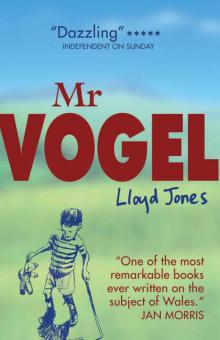 Mr Vogel
Mr Vogel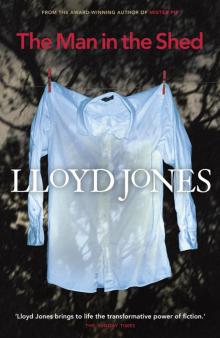 The Man in the Shed
The Man in the Shed Mister Pip
Mister Pip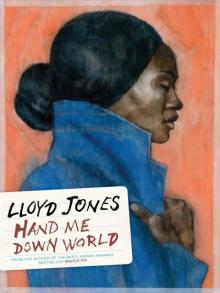 Hand Me Down World
Hand Me Down World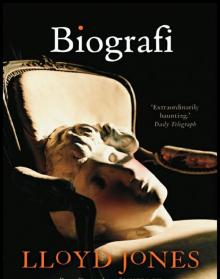 Biografi
Biografi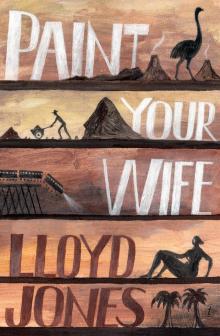 Paint Your Wife
Paint Your Wife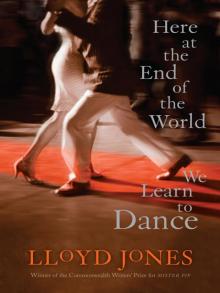 Here at the End of the World We Learn to Dance
Here at the End of the World We Learn to Dance My First Colouring Book
My First Colouring Book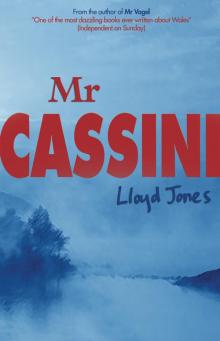 Mr Cassini
Mr Cassini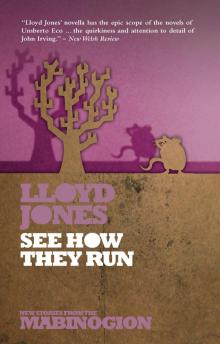 See How They Run
See How They Run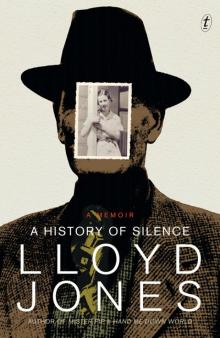 A History of Silence
A History of Silence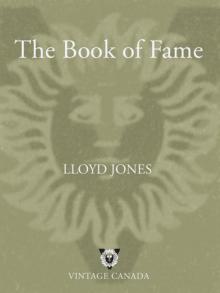 The Book of Fame
The Book of Fame